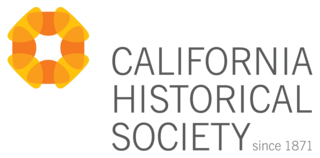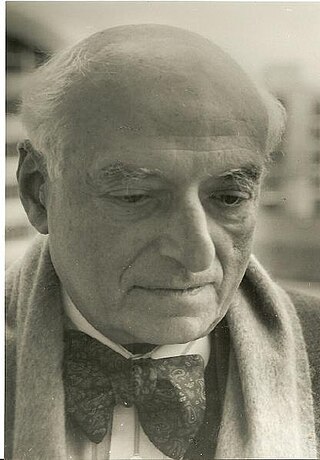
The Polish Academy of Arts and Sciences or Polish Academy of Learning, headquartered in Kraków and founded in 1872, is one of two institutions in contemporary Poland having the nature of an academy of sciences.

Leiden University Libraries is a library founded in 1575 in Leiden, Netherlands. It is regarded as a significant place in the development of European culture: it is a part of a small number of cultural centres that gave direction to the development and spread of knowledge during the Enlightenment. This was due particularly to the simultaneous presence of a unique collection of exceptional sources and scholars. Holdings include approximately 5,200,000 volumes, 1,000,000 e-books, 70,000 e-journals, 2,000 current paper journals, 60,000 Oriental and Western manuscripts, 500,000 letters, 100,000 maps, 100,000 prints, 12,000 drawings and 300,000 photographs. The library manages the largest collections worldwide on Indonesia and the Caribbean. Furthermore, Leiden University Libraries is the only heritage organization in The Netherlands with three registrations of documents in UNESCO's Memory of the World Register.

The Venus of Urbino is an oil painting by the Italian painter Titian, which seems to have been begun in 1532 or 1534, and was perhaps completed in 1534, but not sold until 1538. It depicts a nude young woman, traditionally identified with the goddess Venus, reclining on a couch or bed in the sumptuous surroundings of a Renaissance palace. It is now in the Galleria degli Uffizi in Florence.

G. Henle Verlag is a German music publishing house specialising in Urtext editions of classical music. The catalogue includes works by composers from different epochs periods, in particular composers from the Baroque to the early twentieth century whose works are no longer subject to copyright. In addition to sheet music, G. Henle Publishers also produces scholarly complete editions, books, reference works, and journals. Since 1995, Henle the range also includes pocket scores. In 2016 Henle began offering the Urtext editions in digital format in an app for iOS and Android tablets.

Saint Praxedis is an oil painting attributed to Johannes Vermeer. This attribution has often been questioned. However, in 2014 the auction house Christie's announced the results of new investigations which in their opinion demonstrate conclusively that it is a Vermeer. The painting is a copy of a work by Felice Ficherelli, and depicts the early Roman martyr, Saint Praxedis or Praxedes. It may be Vermeer's earliest surviving work, dating from 1655.

John Trevor Hayes was a British art historian and museum director. He was an authority on the paintings of Thomas Gainsborough.
The Arnold Schönberg Center, established in 1998 in Vienna, is a repository of Arnold Schönberg's archival legacy and a cultural center that is open to the public.

The California Historical Society (CHS) is the official historical society of California. It was founded in 1871, by a group of prominent Californian intellectuals at Santa Clara University. It was officially designated as the Californian state historical society in 1979. Its headquarters are in San Francisco, though it hosts exhibits and collections across California.
Artibus et Historiae is a semi-annual publication of art historical research published by IRSA since 1980. It is a scholarly peer review journal embracing a broad range of topics within the field of art history; however, it aims to address interdisciplinary connections at the peripheries of art and other humanistic fields, such as psychology, sociology, philosophy, or literature.

Philipp Pinchas Fehl was an Austrian born American artist and art historian.
The Fondation Napoléon is a foundation, registered as a French non-profit organization on November 12, 1987. Its mission is to encourage and support study and interest in the history of the First ,and Second French Empires and to support the preservation of Napoleonic Heritage.

The Leo Baeck Institute New York (LBI) is a research institute in New York City dedicated to the study of German-Jewish history and culture, founded in 1955. It is one of three independent research centers founded by a group of German-speaking Jewish émigrés at a conference in Jerusalem in 1955. The other Leo Baeck institutes are Leo Baeck Institute Jerusalem and Leo Baeck Institute London, and the activities of all three are coordinated by the board of directors of the Leo Baeck Institute. It is also a founding partner of the Center for Jewish History, and maintains a research library and archive in New York City that contains a significant collection of source material relating to the history of German-speaking Jewry, from its origins to the Holocaust, and continuing to the present day. The Leo Baeck Medal has been awarded by the institute since 1978 to those who have helped preserve the spirit of German-speaking Jewry in culture, academia, politics, and philanthropy.

Deepak Shimkhada is a Nepali American educator, artist, art historian, author and community leader. He currently serves as an adjunct professor at Chaffey College in Rancho Cucamonga, California. He has previously held visiting and adjunct appointments at several universities in the United States, including Scripps College, Claremont Graduate University, California State University, Northridge, University of the West and Claremont School of Theology. His teaching career began in 1980 and although he is fully retired from full-time teaching, he currently teaches Asian art part-time at Chaffey College.
Walter Arthur Liedtke, Jr. was an American art historian, writer and Curator of Dutch and Flemish Paintings at the Metropolitan Museum of Art. He was known as one of the world's leading scholars of Dutch and Flemish paintings. He died in the 2015 Metro-North Valhalla train crash.

Jan Białostocki was one of the most famous Polish art historians of the 20th century.

Irving Lavin was an art historian of Late Antique, Medieval, Renaissance, Baroque, and Modern painting, sculpture, and architecture. His wide-ranging contributions centered primarily on the correlation between form and meaning in the visual arts.

Venus and Cupid (Sleeping Venus) is a circa 1626 painting by Artemisia Gentileschi in the Virginia Museum of Fine Arts. Venus and Cupid is a depiction of a sleeping Venus, who reclines on a blue bed covering and rich crimson and gold tasseled pillow. She wears nothing except a thin wisp of transparent linen around her thigh. Her son Cupid fans her with richly colored peacock feathers as she drifts to sleep. He is gazing at her with an adored, raptured expression. In the background, there is a window looking out onto a moonlight landscape where a temple to the goddess lies. Venus's face has full cheeks, heavy lids, a prominent nose, and small protruding chin—all features of Gentileschi's own face. The body movements are natural: Venus's hand rests lightly on her side, her legs are gently laid together. The work blends together realism and classicism through its iconography and the artist's style.

The Divine Comedy Illustrated by Botticelli is a manuscript of the Divine Comedy by Dante, illustrated by 92 full-page pictures by Sandro Botticelli that are considered masterpieces and amongst the best works of the Renaissance painter. The images are mostly not taken beyond silverpoint drawings, many worked over in ink, but four pages are fully coloured. The manuscript eventually disappeared and most of it was rediscovered in the late nineteenth century, having been detected in the collection of the Duke of Hamilton by Gustav Friedrich Waagen, with a few other pages being found in the Vatican Library. Botticelli had earlier produced drawings, now lost, to be turned into engravings for a printed edition, although only the first nineteen of the hundred cantos were illustrated.
Dr. hab. Józef Grabski is a Polish art historian, director of the Institute for Art Historical Research IRSA since its founding in 1979, publisher and editor-in-chief of Artibus et Historiae.
Amir Hossein Zekrgoo is an Iranian artist, art historian and Indologist. He has been professor of Islamic and Oriental arts at the International Institute of Islamic Thought and Civilization (ISTAC) from 2001 to 2016. He was awarded Ikuo Hirayama Silk Roads Fellowship by UNESCO.














